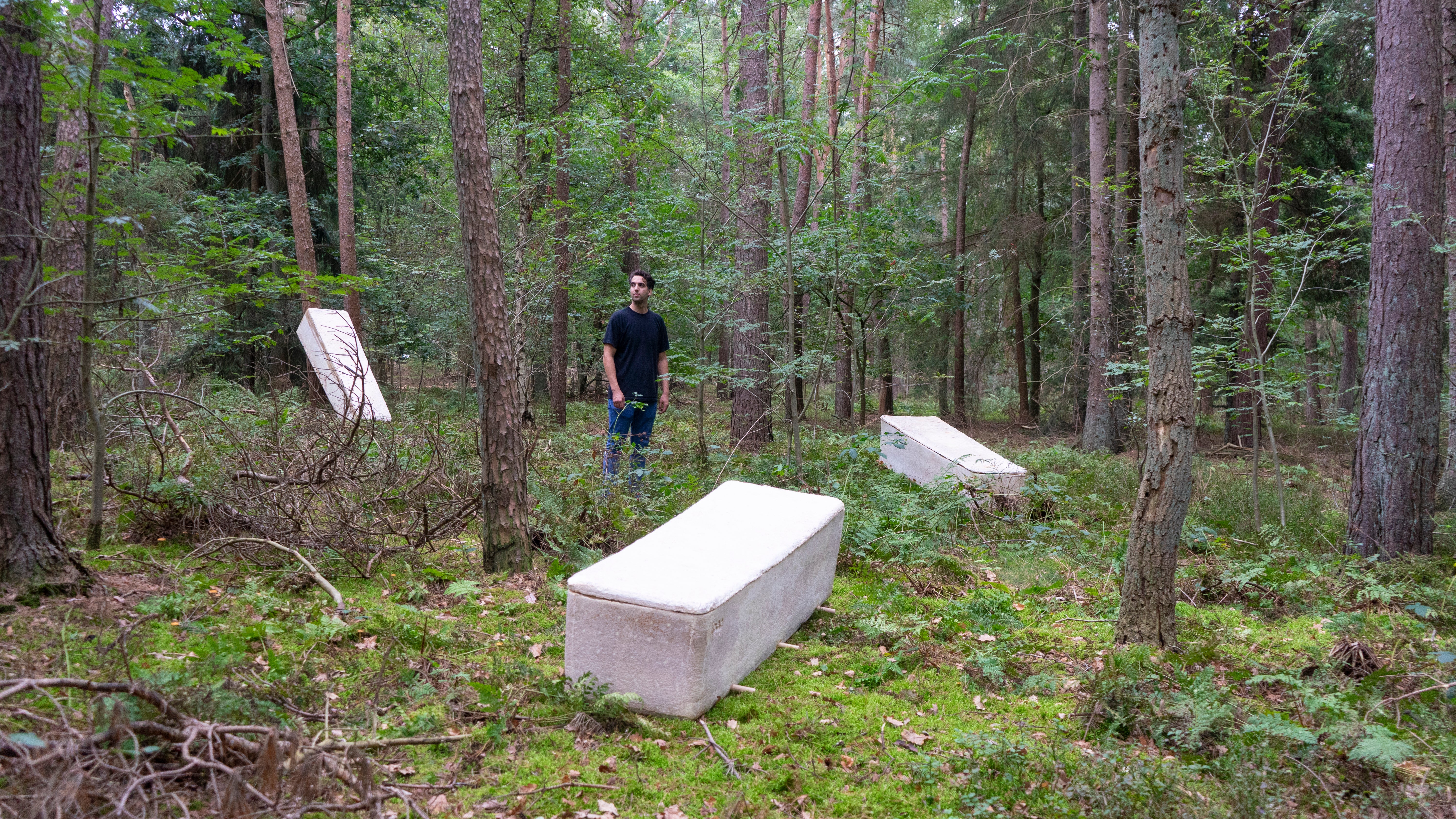Is this the most magic mushroom of all? The fungus behind the living coffin
New invention hailed as the future of burial, writes Lauren Razavi


The past week has been a wild ride for Bob Hendrikx. Last Monday, the Delft University of Technology sent out a press release outlining what the millennial Dutch bio designer had been working on, mostly in secret, for the best part of a year. When news of his invention broke, it quickly went viral. Over a few days, he’s appeared on television stations and made headlines worldwide.
Hendrikx, 26, is the creator of the “Living Cocoon”, a sustainable coffin made from the mushroom fibre mycelium. The magic mushroom, dubbed “nature’s recycler”, helps turn corpses into compost.
“Mycelium looks for waste materials constantly and converts them into nutrients for the environment,” Hendrikx explains. “It even removes toxic substances like oil, plastic and metal from the soil and helps with the natural processes of decomposition. It also connects everything underground, so you can think of it like nature’s internet.”
For humans, it means the mycelium in the coffins will help decompose a body allowing it, in death, to breathe life into its new surroundings.
The invention could forever change the way in which we are laid to rest. Hendrikx envisions a future where people are buried in parks full of trees instead of cemeteries full of gravestones.
He came up with the idea for his sustainable coffin during Dutch Design Week last October. Showcasing a home pod design, also made from mycelium, a girl visiting his exhibition laughingly asked him: “If my grandma dies, can I just leave her inside then?”
But it turned out to be no joke. Hendrikx began to explore the potential of mycelium coffins. He founded a startup called Loop and it took him less than 12 months to create the prototype and test it out with the help of the funeral industry. Earlier this month, a mycelium coffin was the final resting place for an 82-year-old Dutch woman, apparently a world first.
To make the coffins, Hendrikx and his team mix mycelium with other materials in a mould to create a chemical reaction. The mycelium produces an enzyme and grows to fill the shape of its mould. The “Living Cocoons” take just seven days to grow and the process doesn’t require any energy, heat or light. Once occupied, the coffins and the bodies inside them take less than three years to decompose.
In contrast, conventional coffins take at least 10 years to break down in the earth. Varnish, paint and metal fixtures are a source of ground pollution, while the increasingly popular alternative of cremation is a fuel-intensive process that releases harmful carbon emissions into the atmosphere.
Eco-friendly send-offs have been around for years in the shape of cheaper options such as bamboo, banana leaf, wicker and even cardboard coffins.
Hendrikx isn’t the first person to try and make death more sustainable either. New York designer Shaina Garfield has created a different kind of sustainable coffin from fungus and South Korean artist Jae Rhim Lee came up with a sustainable mushroom burial suit.
But it is Hendrikx’s use of mycelium, a nutrient used to restore soil ruined by the Chernobyl nuclear disaster, which could prove so effective.
So, will this new type of coffin set the standard for 21st-century burial?
Jelle Hatenboer, 27, is an Extinction Rebellion activist from Rotterdam and one of many millennials who support the invention on sustainability grounds. “The design just makes sense. Our current burial traditions are extremely damaging,” he says. “We’re all part of nature. Of course we should return to it after passing away.”
Urban designer Alison Killing has spent years studying the role of death in the architecture and culture of cities across Europe. She highlights that conventions around burial vary from country to country. In the UK, for example, graves are considered occupied in perpetuity, meaning that burial space is scarce. The Dutch, however, rent plots for only a period of up to 20 years. After that, remains are removed and cremated, and plots sold onto others.
Such differences make Killing doubt that new death and burial conventions will be adopted quickly, at least on the global scale: “The coffins are a fantastic innovation – but the next problem to tackle has nothing to do with what’s technically possible. It’s about changing people’s relationship with death and death rituals. Attitudes already differ a lot between countries and religions, so it’s difficult to imagine a sudden, widespread shift.”
Cost could also be a barrier.
We’re all part of nature. Of course we should return to it after passing away
The price for a Living Cocoon is currently around €2,000 (£1,840), but Hendrikx wants to get that down to €500 per coffin so that almost anybody can access one. Even at a premium cost, though, the public reception has been positive so far. The first batch of 10 coffins went on sale earlier this month and sold out in less than a week, with the first funerals taking place soon after.
For now, Hendrikx says he wants to concentrate on the Dutch market.
“Honestly, my mission is simple: I want to go to polluted areas, clean up the mess using mycelium, and plant beautiful forests.”
He adds: “We are trying to regenerate the earth and reduce the harm that humans cause to the environment. We need to build in new and better ways. The way I see it, if we help nature, nature will help us.”
Join our commenting forum
Join thought-provoking conversations, follow other Independent readers and see their replies
Comments


Bookmark popover
Removed from bookmarks